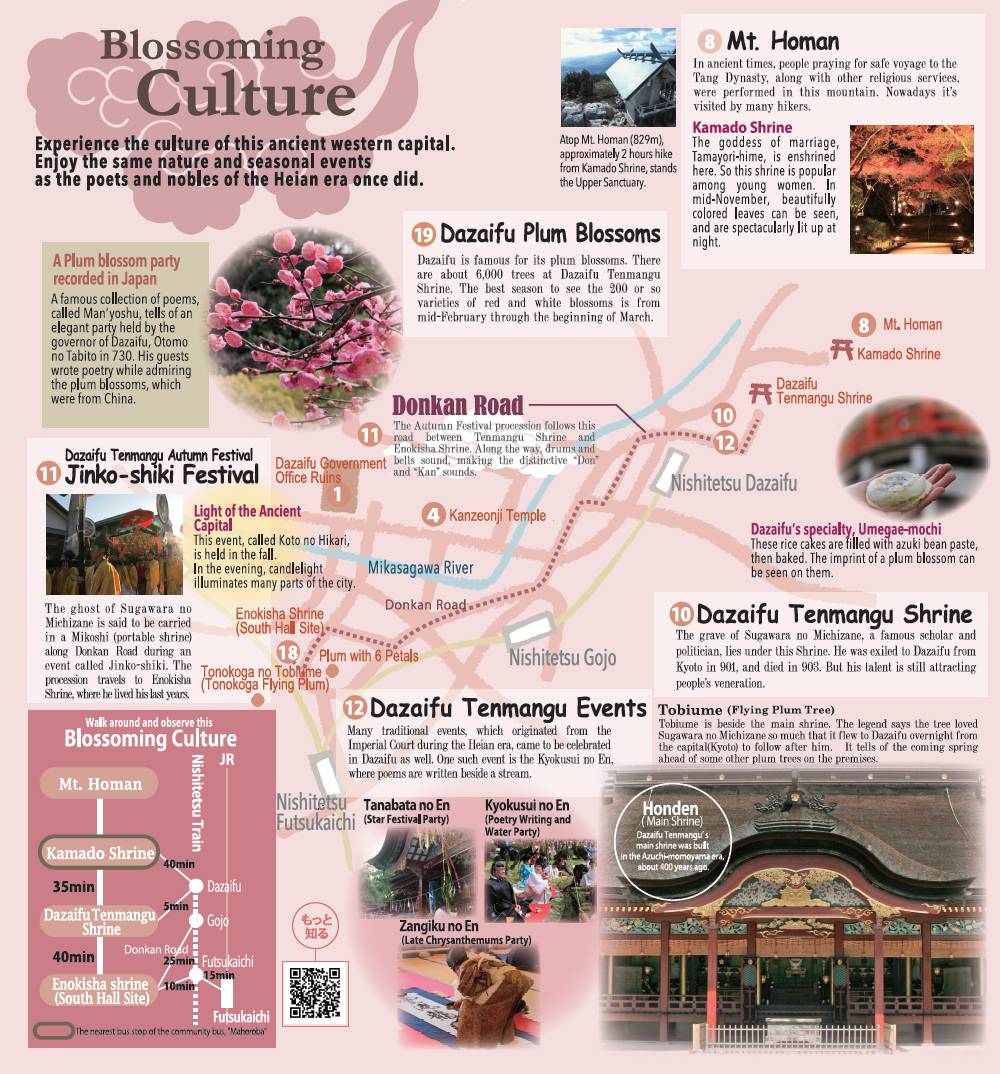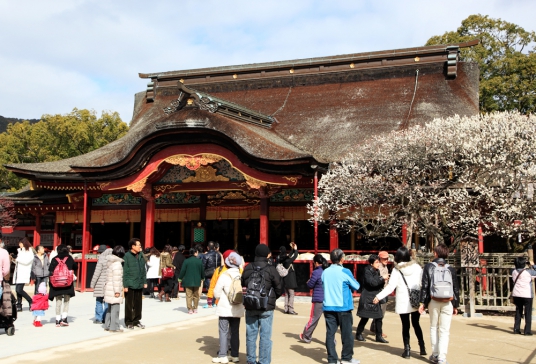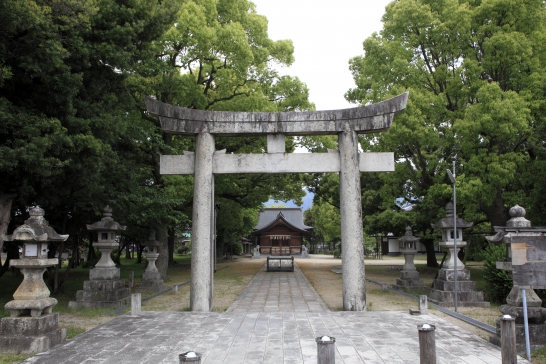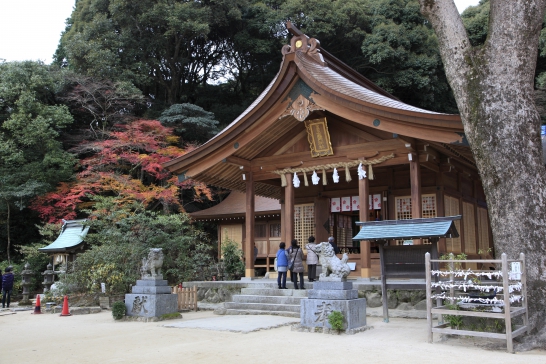
Blooming Culture

Let's experience the culture of the Western Capital still remaining now while enjoying the nature and seasonal events in Dazaifu, which the poets of Man'yoshu and nobles in the Heian era loved.
-

Dazaifu Tenmangu Shrine
Dazaifu Tenmangu Shrine is a mausoleum worshiping Sugawara noMichizane.
Michizane (845-903) showed a talent for poetry since he was a child, later he became “Monjo hakase” (professor of literature) who gave lectures to Emperor and Ministers. He was also an outstanding politician and finally became Udaijin (a rank of minister).
In the year 901, he was falsely accused and convicted because of a plot against him and as a result he was demoted to Dazaifu. In February 25, 903, he died at age 59, in despair.
His body was buried in Dazaifu at his wish. On the way to the burial place, a cow which was pulling a carriage with his body in it, when it suddenly stopped on the road. People wondered why the cow refused to move, so they buried the body at that location. This location later became Dazaifu Tenmangu Shrine.
Since Michizane was an outstanding literati and scholar, he has been worshiped as a god of literature and study until now. -

Enoki-sha Shrine
This shrine is located on the west side of Suzaku Road which continued from the center of Dazaifu Government Office.
This site of South Hall was the official residence for public officials who were assigned from the Imperial Court there and it is known as a residence of Sugawara no Michizane.
The building in the center of the main shrine is called “Otabi-sho”. It is the place where Michizane’s spirit stays one night during the Jinko Festival. Behind this building, there is a small shrine called “Jomyo-ni Hokora” for Jomyoni who took care of Michizane and also there is a memorial service tower for one of Michizane’s children Beni-hime. -

Kamado Shrine
This shrine takes over the tradition of Mt. Homan and it worships Princess Tamayori, Empress Jingu and Emperor Oujin.
“Jo-gu (upper sanctuary)” is located on the mountaintop and “Ge-gu (lower sanctuary)” at the foot of the mountain.
On this mountain, religious rituals have been carried out since the 8th century, but “Kamadosan-ji” Temple appeared in the historical record in the year 803 and showed that they worshiped both gods and Buddha. Later this shrine was called “Daisen-ji Temple”, and was used to carry out trade with foreign countries. It became a famous temple and shrine even in the central area of Japan. In the 12th century, it became a branch temple of Enryaku-ji on Mt. Hiei (Northeast of Kyoto) and thereafter became a famous place to perform Shugen-do. (Japanese mountain asceticism – shamanism incorporating Shinto and Buddhist concepts)
At its peak, it has been said that there were 370 priest residences quarters on the mountain. -
Mt. Homan
Mt. Homan is located on the northeast side of Dazaifu and its altitude is 829-meters. In ancient times, it was also called “Mt. Mikasa” or “Mt. Kamado”.
Since ancient times, it flourished as a place for religious rituals where both gods and Buddha were worshipped.
In the Heian era, a famous aristocrat composed a poem describing the beautiful seasonal scenery of this mountain, and even today it is crowded with many hikers.











